- Joined
- Apr 23, 2011
- Messages
- 2,476
I have a good solid timber block that I use for mainly wadpunching and bashing copper, but as I am working steel more it is not solid enough, nor durable enough when working hot....
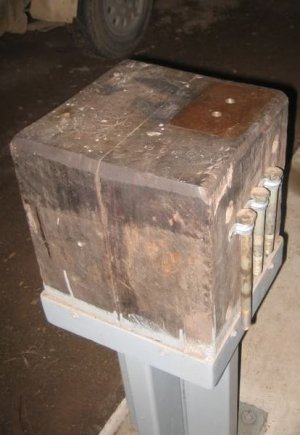
...and up here in north Queensland 2nd hand anvils seem to be difficult to be had, so I decided to make one from some old 2" plate and flat bar I found.
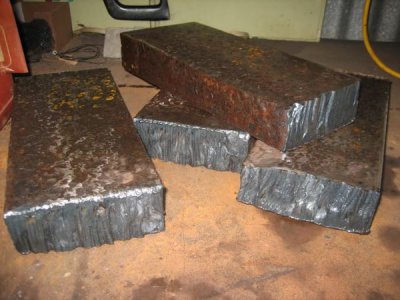
1st I cut the 2" x 5" bar into 5 equal lengths and the anvil top from the 2" plate.
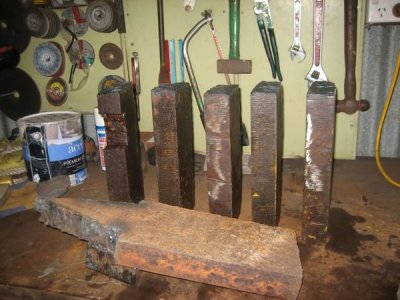
Then I set each piece of the bar perpendicular to the table and milled one end flat and square.
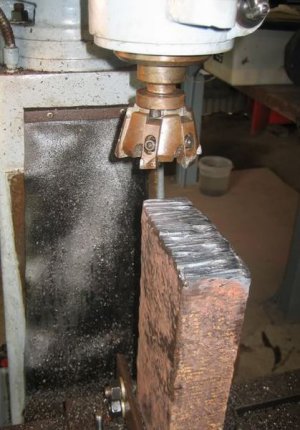
I tacked a piece to the bottom of the anvil top to thicken the horn....Yes I know my oxy cutting leaves a bit to be desired....I did think about photoshopping that one After roughing it out with the torch I welded and ground it to shape several times.
After roughing it out with the torch I welded and ground it to shape several times.
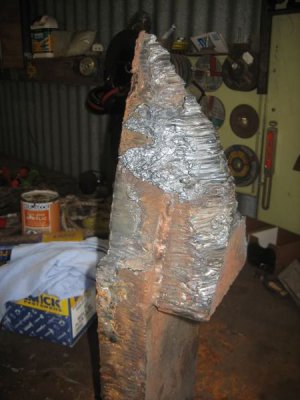
Drilling one of the base legs for the hardy hole and pritchel hole threw up some obstacles, and a few novel clamping arrangements were called for
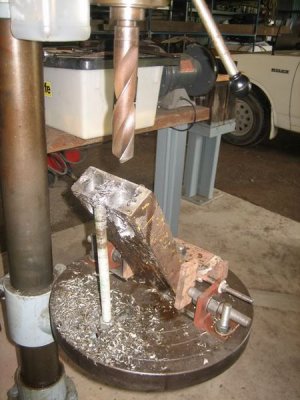
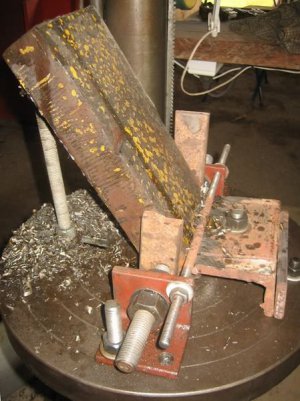
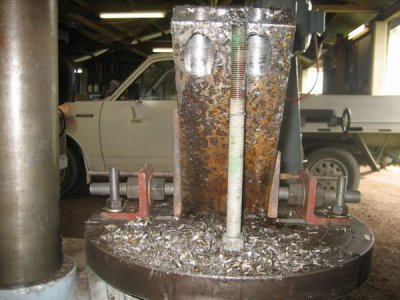
I drilled a 3/4 pritchel hole and a 31/32 hardy hole that I filed out to 1" square.
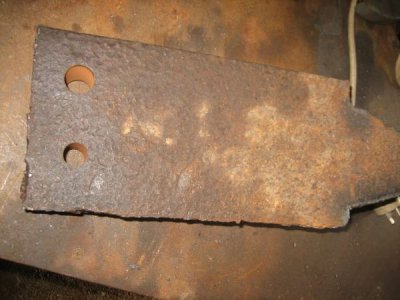
After welding the 1st base leg, (closest to the horn) on 2 sides and across the rear, I added the 2nd leg, welded the same and so on. Then after multiple runs to stitch the legs vertically to each other and across the bottom of the feet I set the anvil pependicular and milled the bottom of the feet flat, before flipping it over and milling the anvil work surface flat.
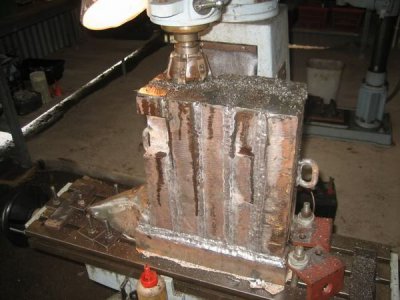
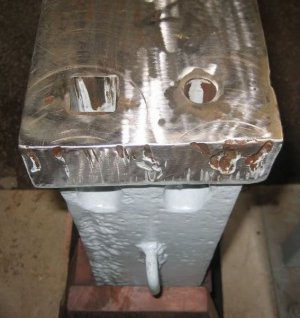
A lick of paint and all that was required was a solid stand.
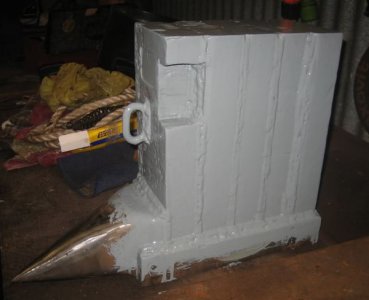
2 x 8 hardwood, dressed, glued and bolted together and it was all ready to run.
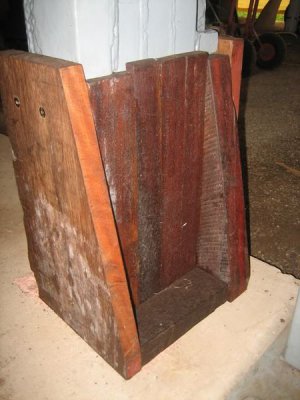
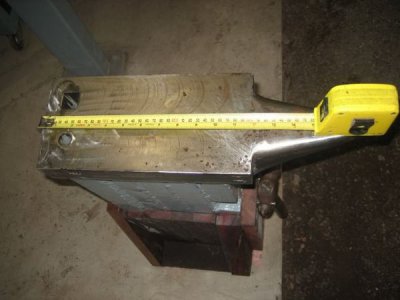
All up I reckon it cost me a packet of rods, some paint, and a bit of electricty. I'm guessing it comes in at about 250 lbs.
It does'nt have any ring, just more of a dull thunk, when you hit it, but in use it does have great rebound. It is so much easier moving metal now.
Cheers Phil

...and up here in north Queensland 2nd hand anvils seem to be difficult to be had, so I decided to make one from some old 2" plate and flat bar I found.

1st I cut the 2" x 5" bar into 5 equal lengths and the anvil top from the 2" plate.

Then I set each piece of the bar perpendicular to the table and milled one end flat and square.

I tacked a piece to the bottom of the anvil top to thicken the horn....Yes I know my oxy cutting leaves a bit to be desired....I did think about photoshopping that one

Drilling one of the base legs for the hardy hole and pritchel hole threw up some obstacles, and a few novel clamping arrangements were called for



I drilled a 3/4 pritchel hole and a 31/32 hardy hole that I filed out to 1" square.

After welding the 1st base leg, (closest to the horn) on 2 sides and across the rear, I added the 2nd leg, welded the same and so on. Then after multiple runs to stitch the legs vertically to each other and across the bottom of the feet I set the anvil pependicular and milled the bottom of the feet flat, before flipping it over and milling the anvil work surface flat.


A lick of paint and all that was required was a solid stand.

2 x 8 hardwood, dressed, glued and bolted together and it was all ready to run.


All up I reckon it cost me a packet of rods, some paint, and a bit of electricty. I'm guessing it comes in at about 250 lbs.
It does'nt have any ring, just more of a dull thunk, when you hit it, but in use it does have great rebound. It is so much easier moving metal now.
Cheers Phil
